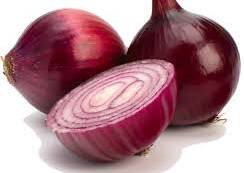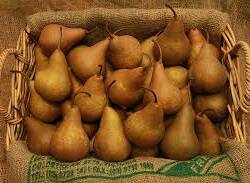Description
Norm Lehne Garden & Orchards in Roseburg has a variety of different types of eating apples (and some of these are excellent in pies and sauce as well) and what you receive will depend on when you order. (Note: usually, our Tuesday morning email specifies which apple(s) are being sourced on any given week…)
Following are the different varieties, along with an estimate – in order – of when they’re normally available:
Summer Harvest:
- Gravenstein: heirloom; an attractive high-quality dessert and culinary apple, first described in 1797. It is well-known in our region as being the absolute best apple for saucing.
- Paula Red Macintosh: Perfect for eating raw; sweet, without being overly sweet, and a bit tart; known to break down easily, making it excellent to bake with and use for applesauce.
- Gala: heart-shaped, with a distinctive yellowish-orange skin marked by red stripes; mildly sweet flavor and distinctive juicy crunch make it a great snack
- Tokyo Rose: small to medium, attractive bright cherry red fruit color, juicy white flesh and sprightly flavor; also known as “Akane”, a cross between a Jonathan and a Worcester Pearmain
- Honey Crisp: mildly aromatic with a juicy flavor and crisp flesh; its skin is two-thirds mottled red with a straw background; a cross between the Macoun and Honeygold and developed at the University of Minnesota
- Jonathan: heirloom; excellent apple eaten fresh, stores very well; crisp, juicy flesh that makes an excellent sauce; originated in New York in 1862
- Golden Supreme: large, smooth golden yellow apple with a pink blush; sweet, similar to Golden Delicious in flavor; originated in Idaho; an excellent culinary apple
- Empire: crisp white flesh that is slightly tart; cross of McIntosh and Red Delicious Apples, introduced in Geneva, New York in 1966
- Cortland: crisp, sweet apple, good for eating; originated in Malboro, New York
Fall Harvest/Storage:
- Jonagold: juicy, orange-tinted apple with a tangy-sweet flavor; excellent fresh, great in cooking and makes a great pie. The Jonagold is a cross between Golden Delicious and Jonathan that was introduced in 1968
- Striped Red Delicious: heirloom; crisp and sweet; mottled with bright yellow, green and deep red blushes of color; NOT the same as the mushy, tasteless, grocery store version!
- Golden Delicious: heirloom; crisp, sweet, juicy flesh with a distinct “Delicious” flavor; from a seedling of the Grimes Golden Apple in West Virginia, introduced in 1900
- Idared: juicy, tangy flavor, large and round with a thick cherry-red skin and tender white flesh; developed in 1942 in Idaho by crossing Jonathon and Wagener apples; excellent pie apple
- Cameo: bright red stripes covering a yellow-green under color; tastes as good as it looks, with crunchy sweet-tart flavor; can be eaten fresh, used in pies or in applesauce; chance seedling from the Peshastin, WA, orchard of Darrel Caudle in the 1980’s
- Winesap: firm yellow flesh; crisp texture; tart, rich wine-like taste. Some say it smells like cinnamon
Winter Storage:
- Fuji: satisfying crunch and juiciness to them; fairly sweet with only a slight tartness
- Braeburn: tangy flavor that straddles sweet and tart; skin color varies from orange to red over a yellow background; developed from a chance seedling in New Zealand in 1952
- Melrose: heirloom; firm apple with juicy flesh; excellent dessert apple, and great for cooking; cross between Jonathan and Red Delicious, originated in Wooster, Ohio in 1944; the official Ohio State Apple; if the Melrose Apple is stored until after Christmas, it develops a pleasant fruity aroma
- Granny Smith: heirloom; medium to large with a distinctive green skin which also can bear a red blush; most notably known for their tart, but well-balanced flavor which really comes through when they are baked or sautéed; discovered in Australian in 1868 as a chance seedling by “Granny” Anne Smith of Ryde, New South Wales
The varieties change every few weeks, and we generally specify which varieties we’re offering in our Tuesday morning email. Plus you can count on the fact that ALL of Lehne’s apples are crisp, juicy, sweet (unless otherwise noted)…AND tree-ripened!
So, what is “IPM-Grown”? Here is a basic definition (from the EPA website): “Integrated Pest Management (IPM) is an effective and environmentally sensitive approach to pest management that relies on a combination of common-sense practices. IPM programs use current, comprehensive information on the life cycles of pests and their interaction with the environment. This information, in combination with available pest control methods, is used to manage pest damage by the most economical means, and with the least possible hazard to people, property, and the environment.” For the rest of the story, follow this link: Integrated Pest Management (IPM).




